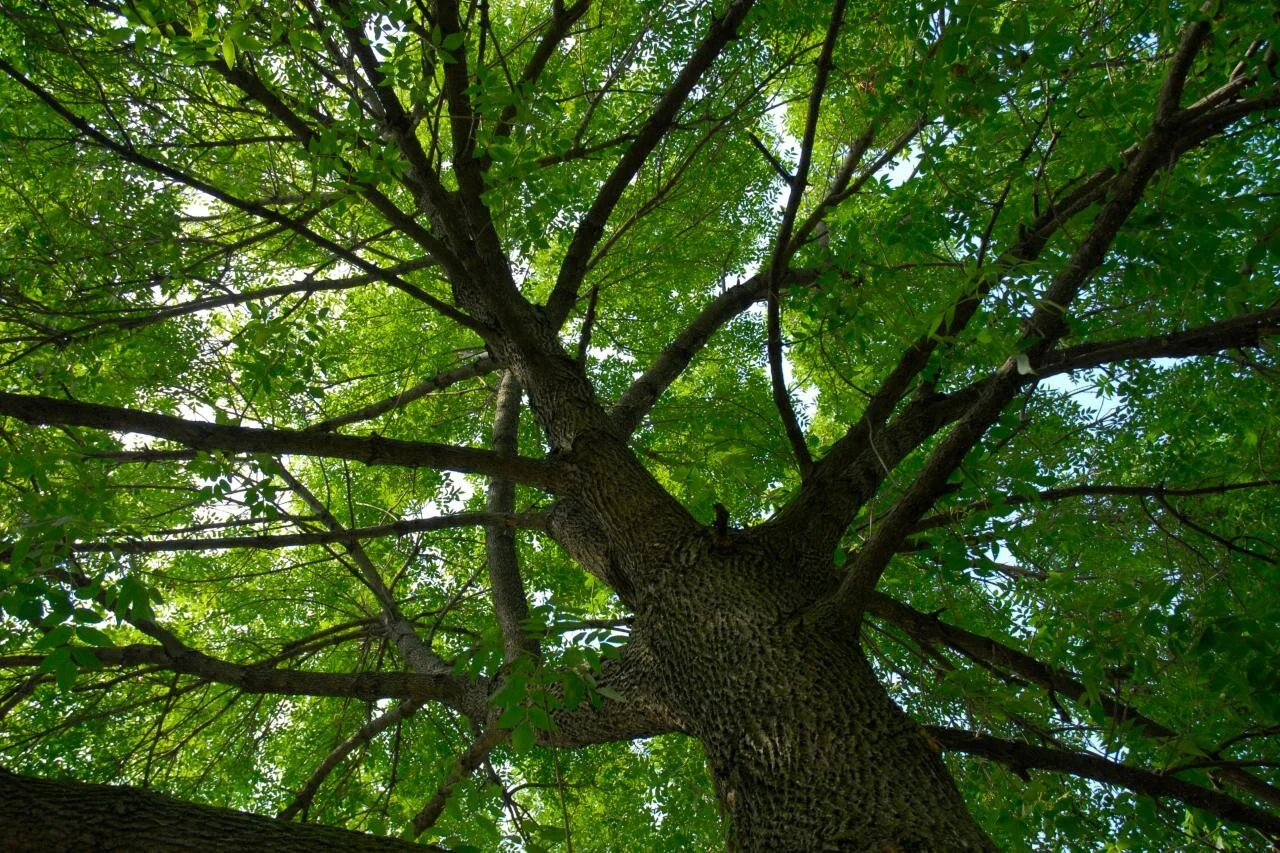The Emerald Ash Borer (EAB) is a minuscule metallic-green beetle threatening ash trees across the United States, first discovered here in Michigan circa 2002. It's theorized to have been introduced to the U.S. via wooden packing material used in transport from China. While the U.S. is said to have several billion ash trees, this beetle has already killed millions of trees in the state of Michigan alone. It has spread to most of the midwest and east coast, as well as into Canada. Adults only reach about ½ inch in length and ⅛ inch in width. Their larvae bore to the trees’ living tissue layer, feeding beneath the bark. This interrupts water and nutrient transport within the tree, leading to bark splitting and dead limbs. If the issue is not addressed early and proactively, the tree will die. Depending on tree size and health, as well as severity of the infestation, a tree will die 1 to 4 years after first contact with EAB.
A good place to start when it comes to understanding this topic is with the identification of ash trees. Knowing what an ash tree looks like is the first step toward knowing if it is a tree capable of having an EAB infestation. Ash trees belong in the genus Fraxinus, which is within the olive (Oleaceae) family. They exhibit an opposite branching pattern, and leaves are pinnately compound. Ash trees are also known for their characteristic bark, which is deeply grooved. Additionally, their fruits are samaras; a single seed with a papery wing.
The leaves of various Ash trees, displaying their pinnate compound structure.
Examples of Ash tree samaras.
You can do your part to save these species! Now that you know how to recognize an ash tree, let's discuss signs of EAB. More general symptoms include a reduction in crown density and suckers at the base of the tree; both of these are stress indicators (though not directly linked to EAB). More specifically, visible exit holes, tunneling under bark, splitting of bark, and a high level of woodpecker activity all indicate the presence of EAB in an ash tree. Woodpeckers have been found to consume a large portion of EAB larvae within a tree, doing so by flicking off strips of bark as they search below the surface. This creates a dramatic and distinct visual, a definitive sign to note (see photos below).
Be on the lookout for signs of EAB and report any infected trees you may come across. It is vital to address the issue as soon as possible, and to reduce the chances of spreading. Record the location and take photos. If a tree on your property is infested, also be aware that emerald ash borers can remain in firewood supply. Due to this, burn any firewood you have and do not bring it to an alternate location. You can call the USDA Emerald Ash Borer Hotline at 1-866-322-4512 to report an incident, and go to emeraldashborer.info for a map of EAB across the United States!
Sources:
Arborday.org. 2020. Emerald Ash Borer - The Arbor Day Foundation. [online] Available at:
<https://www.arborday.org/trees/health/pests/emerald-ash-borer.cfm> [Accessed 22 December 2020].
Knight, K. and Rebbeck, J., 2014. Woodpeckers Capitalize On An Invasive Forest Pest – Research
Highlights - US Forest Service Research & Development. [online] Fs.fed.us. Available at:
<https://www.fs.fed.us/research/highlights/highlights_display.php?in_high_id=625> [Accessed 5 January 2021].
Matsoukis, C., 2021. Emerald Ash Borer. [online] Emeraldashborer.info. Available at:
<http://www.emeraldashborer.info> [Accessed 5 January 2021].
Richins Myers, V., 2020. 13 Types Of Ash Trees—And The Impact Of Emerald Ash Borer. [online] The Spruce. Available at: <https://www.thespruce.com/twelve-species-of-ash-trees-3269661>
[Accessed 5 January 2021].






